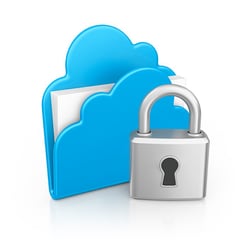Tips For Reducing Ransomware Risks in Your Optometric Practice
Ransomware impedes productivity, costs victims money, and can cause a loss of trust. A single attack could cripple an optometric practice. A ransomware attack is a form of malicious software that blocks victims from accessing their data or computer system until the victim pays the attacker money. This week, the world saw one of the largest ransomware attacks that targeted some of the largest organizations. The WannaCrypt, also known as WannaCry, attack reminded everyone of the importance of data security.
With the rise of cyber attacks, how can you keep your practice and your patient data out of the hands of the wrong people? Today, we’re going to talk about different ways to protect your practice from falling victim to ransomware attacks in the eyecare industry.
How To Reduce The Effects of A Ransomware Attack In Your Optometric Practice
Have a Backup Plan
Ransomware attackers target sensitive data. This makes healthcare organizations, like optometric practices, vulnerable. One report states that 72% of all 2016 malware attacks in healthcare were ransomware. To minimize the impact of a ransomware attack, optometric practices should backup their data regularly.
Regularly backing up your information reduces the stress and rework required if your system is compromised and you have to erase your computer or server. If you have to erase your data on a compromised machine, you have a more recent version the data to restore it.
Some experts believe in the 3-2-1 backup strategy that suggests:
- 3 copies of your data
- 2 local copies on different storage types (using an external hard drive)
- 1 backup off-site (such as secure cloud storage)
Stay Current on Updates
The WannaCry attack formed from a flaw in Microsoft’s Windows operating system. Although Microsoft identified the vulnerability and sent a patch to fix the flaw, many users either did not install the patch or ran older versions of the operating system that did not have a fix.
While updating all of the software that your practice uses to effectively and efficiently care for patients can be a hassle, staying on top of these updates can reduce the risks of data breaches and other cyber attacks that could cost your practice and money and lose your communities’ trust. If updating software is too burdensome, consider consolidating your optometry software under one vendor to manage the maintenance.
Consider Moving to the Cloud
Onsite servers are difficult and costly to maintain. While there are many tech-savvy ODs out there, relying on homegrown security parameters to protect the data on the server may not be enough to reduce breaches. Moving to a cloud based EHR can assist your practice with backing up data and updating systems as well as staying on top of security measures that make it more difficult for costly cyber attacks and data breaches to occur.
Be a Skeptic
Ransomware can attack systems when users click malicious links or open corrupt files. For this reason, it’s important to be skeptical of pop-up ads, links, or files in an email. If you don’t know or trust the sender of an email, don’t click on anything.
While the emails that cyber attackers are sending look more legitimate now, there are some ways to identify a malicious email, some of these include:
- Multiple spelling and grammar errors
- Misleading domain names
- Mismatched URLs
- Unknown sender
- Asks for personal information
Keep up with all of our posts by subscribing to the blog!

